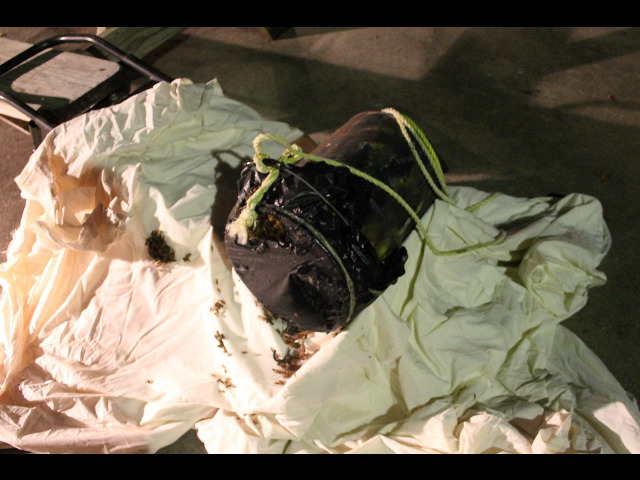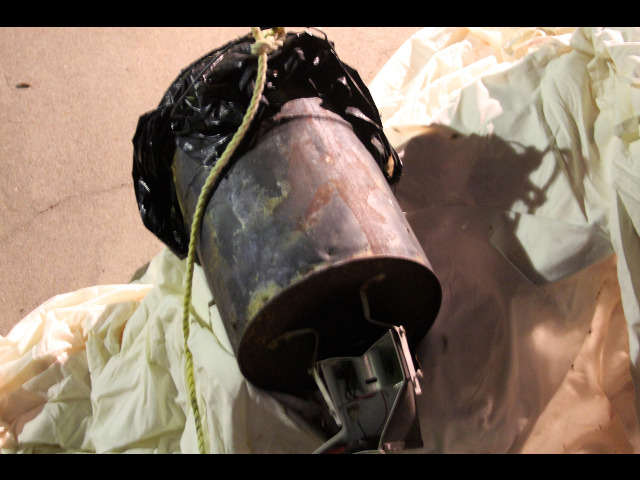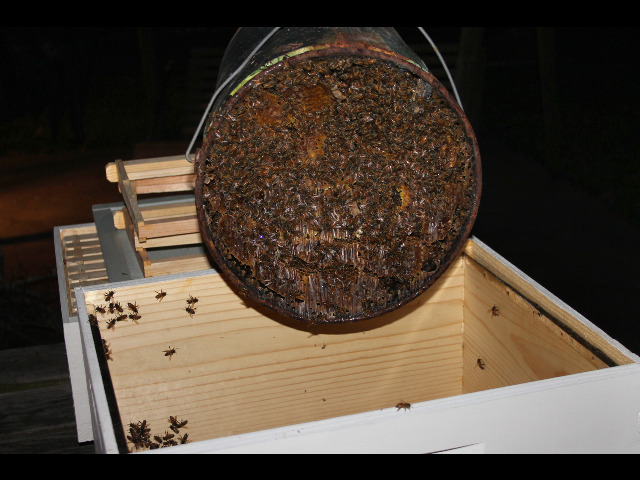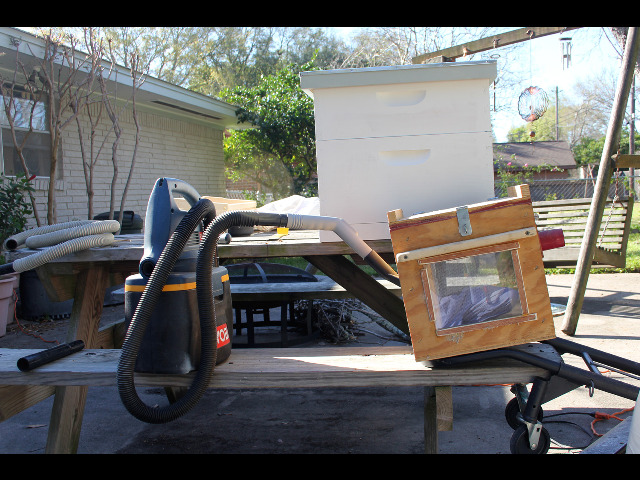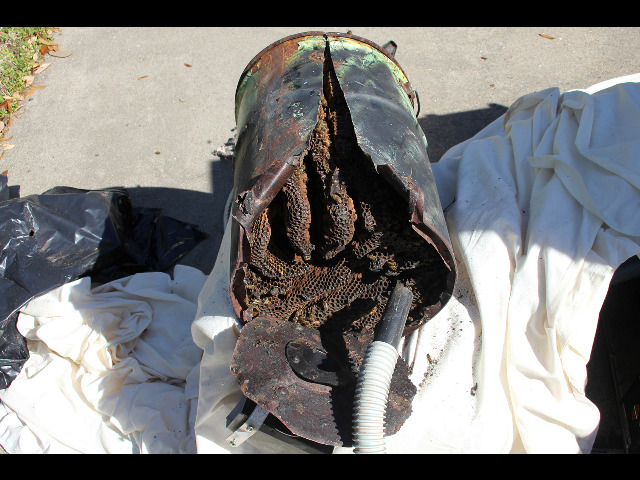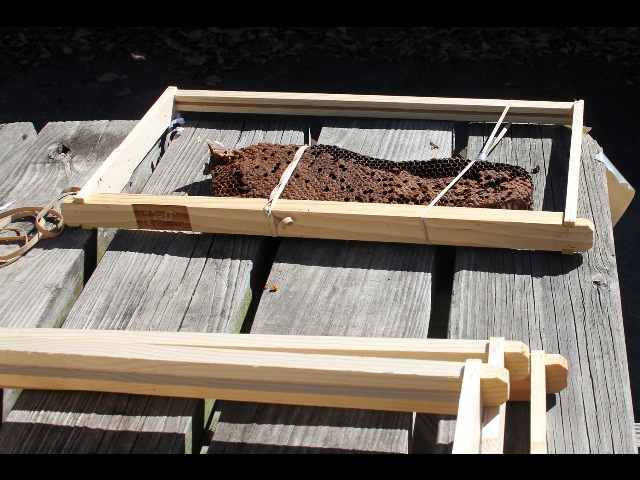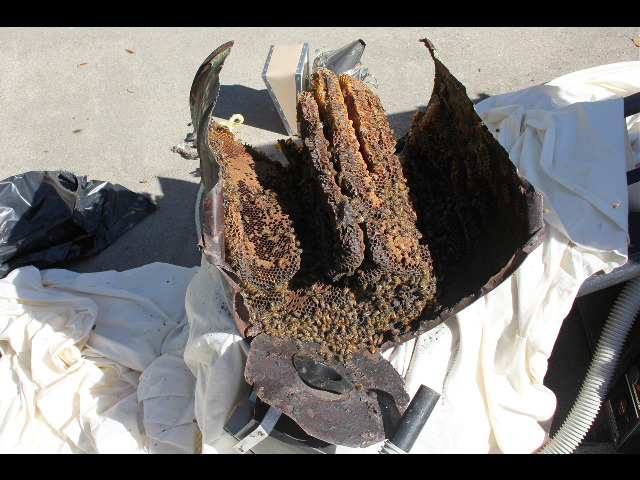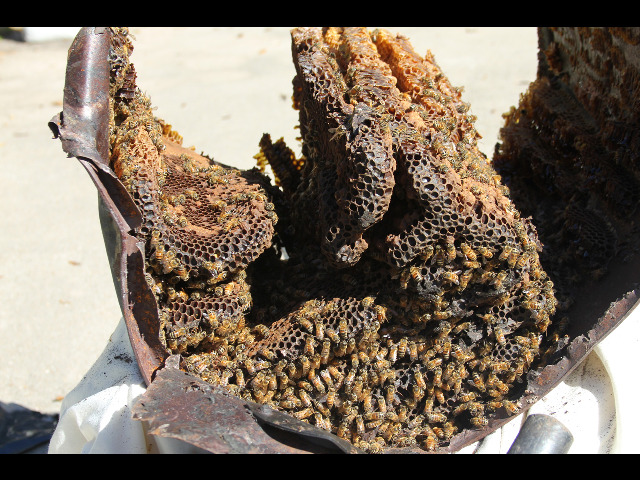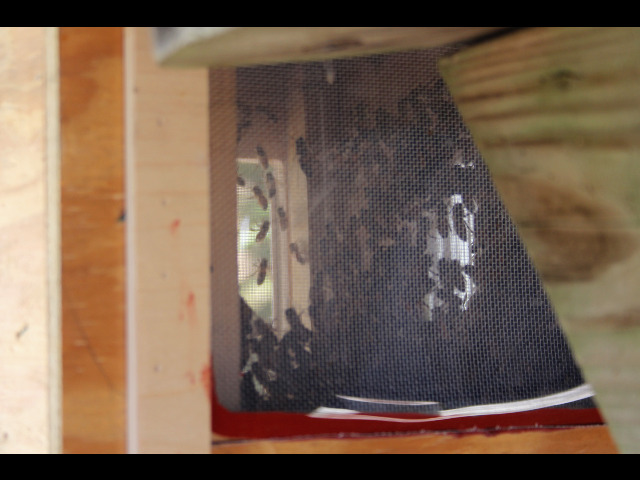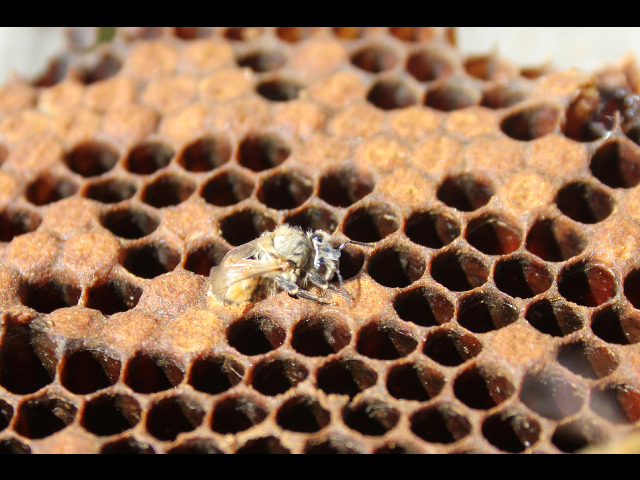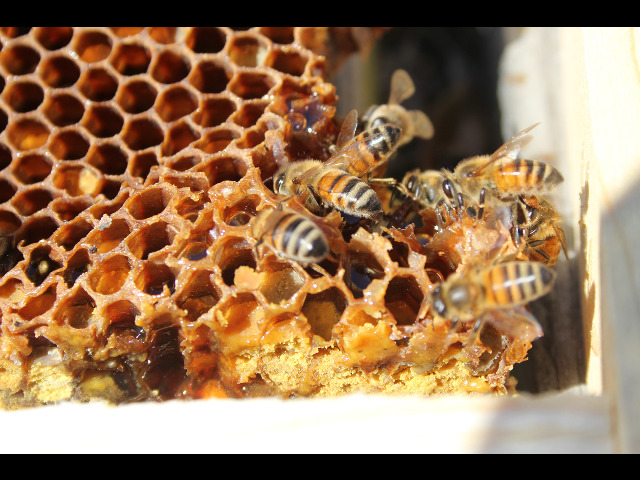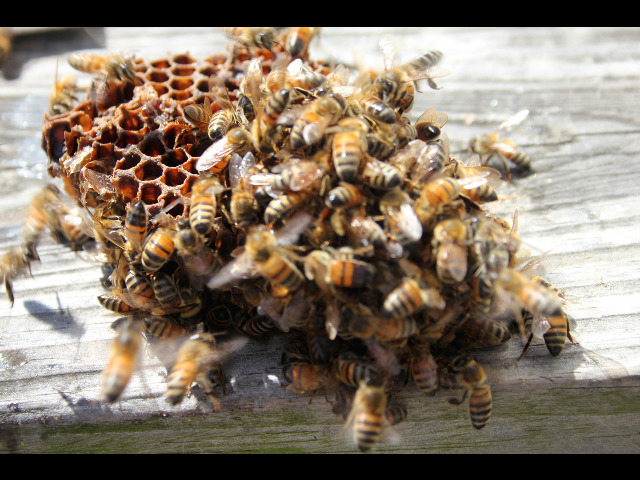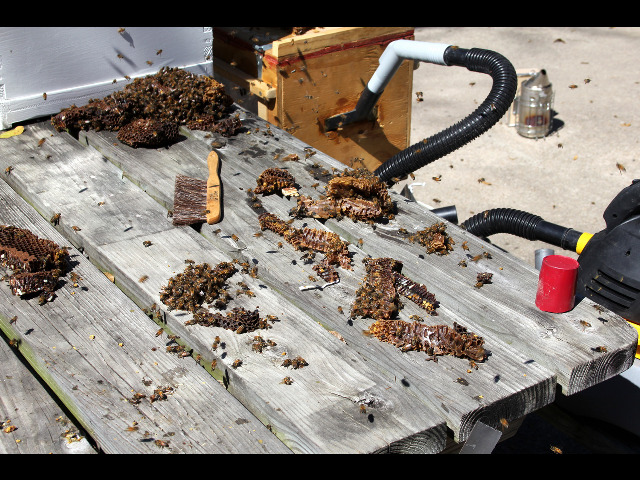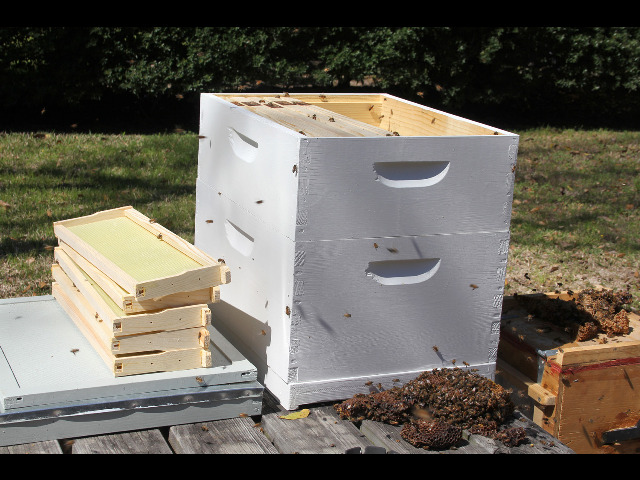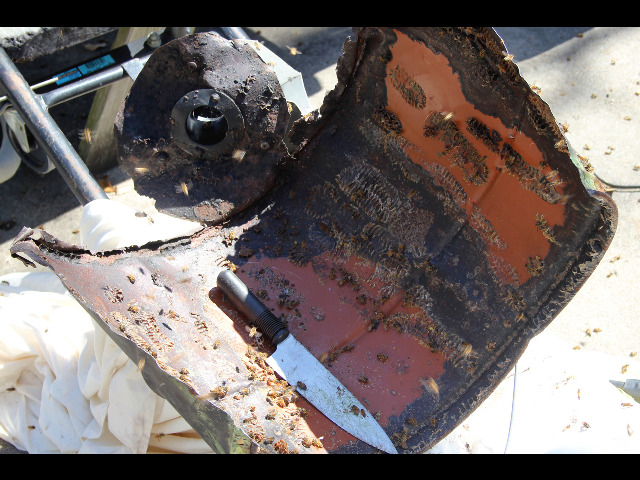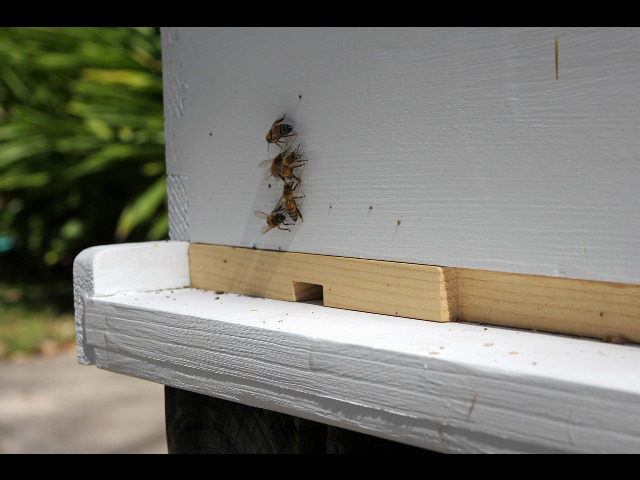CRANE MEADOWS Collection of the Second Bee hiveTwo weeks after the disappointment of finding out the our first hive didn't make it through the winter, Therese had a co-worker that had a bee hive on her property that she wanted removed. I had put together a box hive kit this past winter and it has ready for bees. I was looking at buying a package for over $100. Therese's co-worker didn't want to spend the $100 "best price" the services wanted to remove the bees. So it was a win-win for all of us! After work Saturday I headed to Anahauc -about 10 mile east of Baytown. Got there right at dusk and walked back to the hive without flashlights. The collection was easy as could be. The bee hive was in a deer feeder that was hanging in a tree by a rope, and some time ago it was cut down and was lying on the ground. Put on my bee suit and layed out a sheet right next to the 5 gal. deer feeder bucket. Picked up the bucket gently and set iot on the sheet and quickly wrapped it up without alarming the bees. Strapped it on the back of the car -I have a hitch careering rack like for a couple ice chest.
The Deer Feeder- 5 gal. bucket with bee hive inside. Black plastic bag covering top. Arrive at house after dark. about 8pm.
Plastic bag removed, can caked with Propolis (resinous mixture bees collect from tree buds, sap flows, or other botanical sources, used as a sealant for unwanted open spaces). Was obvious I wasn't going to be able to move the hive that night.
Setting up bee hive box (new home), bee vacuum and other tools. 9am
Cutting open the can carefully as bees kept pouring out, vacuuming bee, hoping to catch the queen. 10am
Cutting out section of honey comb and rubber banding them to hive frames. 10:30am
Can fully cut open. Comb was curved and wrapped around in weird ways, I figured from hive being built while bucket was upright. The bees had to rearrange their whole home when the owners of the deer feeder cut it down from the tree it was hanging in.
Closer up, there are still many thousands of bees inside between the combs. 10:30am
I built my bee vac with windows on front and back so i could see how many bees I'd collect and that they weren't getting hurt by too much vacuum pressure. This is less than 1/2 the bees I collected before dumping them into the hive box. At that point I couldn't even see through the windows. 10:30am
This is brood comb- where the bees raise their young. 3 days after a queen lays an egg it becomes a larvae the workers feed for ab6 days, then cap the Pupa and a worker emerges about the 21st day. Here is a new bee emerging from its cell while I was working at moving the hive. time: 11:15am
This comb contained a lot of pollen cells. The bees feed the pollen with honey to the larvae. This honey/pollen mixture is called "bee bread". Here the bees are trying to save their resources.... about the time MANY other bees from a nearby hive were also stealing honey and pollen I had out in the open. By 11:30am there was a full blown feeding frenzy as other scavenging bees in the area had gone back and told their sisters where there was a LOT of food to be had easily! This project was taking longer than I thought and the air was full of thousands of bees even though I had thousands of bees in the bee vac.
The aftermath of my trimming the combs to fit on frames. I put all the extras in a bucket after trying to get as many bees off them. I'll process the honey, pollen and bees wax(comb) next weekend when the few remaining bees in the sealed bucket are dead. :) I'll do that in a closed up garage where I won't start another feed/robbing frenzy. About noon time. About ready to dump the bee vac into the hive. I'm hoping I got the queen! Moved comb in the bottom box- about full. Top box is empty frames with a foundation for the bees to build new comb on. On the left are the rest of the frames I'll put in right after I dump the bee vac into the new hive. I dumped the bees in about 12:30pm
After I finished cutting off the remaining small bits of comb that were added to my save bucket. That's one of my shop knives- I know better than to use one of Therese good kitchen knives!
DONE! about 1:30pm- 4 hours. On the front of the hive is an "entrance reducer". With all the robbing and other bees, it's easier for our hive to defend its home when the entrance is reduced to a very small opening. Best as i can tell on Monday from various behaviors, I believe we have the queen in her new home. Cameron & Therese
|




